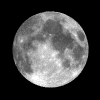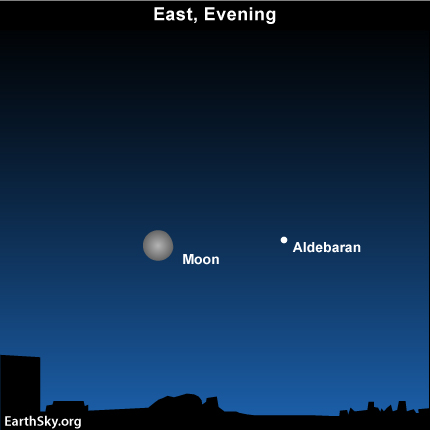Courtesy of EarthSky
A Clear Voice for Science
Visit EarthSky at
www.EarthSky.org

 No matter where you live worldwide, tonight you will see a moon that is as far north as the June solstice sun. That is because the moon will reach its northernmost point for the month tonight. Watch for the full-looking waning-gibbous moon to rise north of due east around nightfall tonight.
No matter where you live worldwide, tonight you will see a moon that is as far north as the June solstice sun. That is because the moon will reach its northernmost point for the month tonight. Watch for the full-looking waning-gibbous moon to rise north of due east around nightfall tonight.
Like the sun during the day, tonight’s moon will travel westward throughout the night as Earth spins beneath the sky. Look for the moon to transit – in other words, climb to its highest point – somewhere around midnight tonight. That is when it will resemble the June solstice sun. In other words, it will be high in the sky for us in the northern hemisphere – low in the sky for people in the southern hemisphere.
Click here to find a link to a custom sunrise-sunset calendar (includes moon info)
Around the solar system, moons typically orbit above the equators of their parent planets. But Earth’s moon stands as a notable exception. Our moon’s orbital plane is now tilted by about 24 degrees to the plane of the Earth’s equator, though the exact degree of tilt varies over a cycle of 18.6 years.
Once a month, the moon swings farthest north of the equator, and farthest south of the equator. These monthly extremes are sometimes referred to as northern and southern lunistices. Watch as the moon soars to a northerly extreme on the chilly November night!
Does the dark side of the moon really exist?
Written by Bruce McClure
Astronomy Picture of the Day from NASA/JPL
U.S. Naval Observator Astronomical Information center
The York County Astronomical Society